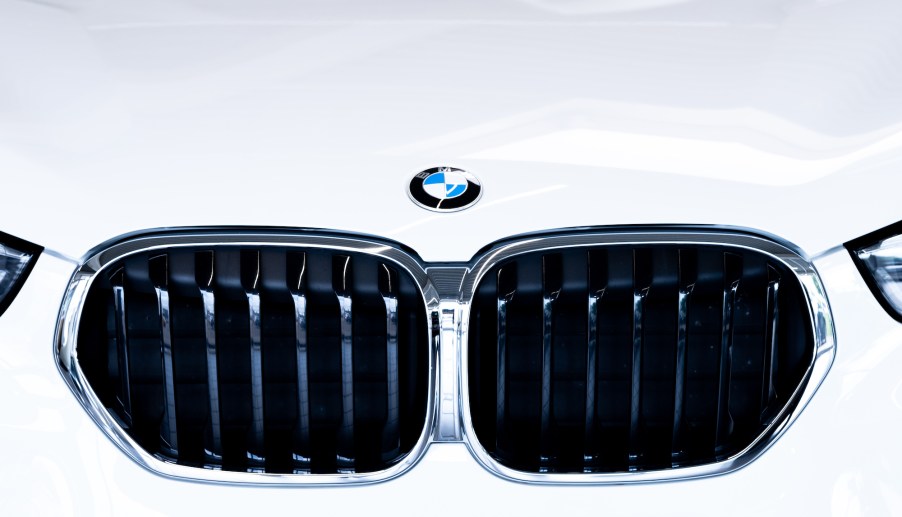
This Corporation Owns BMW, Mini, and Rolls-Royce
There are many car manufacturers and automotive sub-brands. So many that it’s often not readily apparent what company produces specific models. For example, some people may be surprised to know that Hyundai makes the new buzzworthy Genesis GV60. Or that the new EV SUV Polestar 2 is a Volvo creation. Some companies, like BMW, are named for their flagship automotive brand. Still, unless you’re a car enthusiast or industry insider, you’d never guess what other sub-brands lie in their portfolio.
What auto brands does the BMW corporation own?

Bayerische Motoren Werke AG, otherwise known as the BMW Corporation, is well-known for its signature sedans, SUVs, roadsters, EVs, and high-performance vehicles branded as BMWs. But the German multinational manufacturer makes far more than just these status-symbol vehicles.
According to Car Covers, the company started producing aircraft in the early twentieth century, then moved into motorcycles, farm equipment, and railway parts by the end of the first World War. It only became an automobile manufacturer a year before the Great Depression, though it continued making motorcycles and aircraft throughout the Second World War.
Due to its use of slave labor during that War, BMW factories were bombed, and automobile and motorcycle production was banned until 1952. Its ties to the Third Reich meant slow sales throughout the Fifties. However, throughout the Sixties and Seventies, the introduction of several now-iconic models helped BMW regain firm footing in the luxury and high-performance markets.
BMW is now so synonymous with high-end vehicles that it’s hard to imagine the automaker manufacturing anything else. It wouldn’t be shocking that Rolls-Royce, another well-known luxury brand, is in the BMW Corporation’s portfolio. But it may surprise some that Mini, a brand known for its quirky small cars, is also owned and manufactured by BMW.
How Mini and Rolls-Royce became BMW brands
In 1994, BMW attempted to expand its market share and operations by acquiring the failing British conglomerate, The Rover Group plc. As per The Complete Book of BMW, at the time, 80% of the Rover Group, formerly a state-owned enterprise, was owned by the private company British Aerospace (BAe). BAe sold its stake to BMW in 1998, while the German manufacturer bought the remaining 20% of the company’s shares from Honda.
Unfortunately for BMW, despite spending millions of pounds to turn around the Rover Group, it could not keep it from losing money. Within two years, it was forced to sell off core brands, Rover and MG. But it retained Mini and has continued selling and redesigning the small car.
According to CBS News, in July 1998, BMW acquired the Rolls-Royce brand name in a complicated exchange. That month, Volkswagen (VW) bought Rolls-Royce Motor Cars Ltd. from Rolls-Royce plc (the holding company) without securing the rights to the brand name. Rolls-Royce subsequently sold the brand name to BMW, allowing VW to use it until 2002, after which they began manufacturing automobiles under the brand name. VW retained the manufacturing assets and the rights to the luxury brand Bentley.
As a result, you won’t find Rolls-Royce plc on Consumer Reports’ list of automakers and sub-brands. However, Rolls-Royce plc is still a publicly traded company. But despite its name, you’d have a hard time buying a car from them. These days, they sell aircraft engines and components used in the defense, marine, and energy sectors.
What’s next for BMW?
Despite its complex history, big things are in store for BMW. Along with other major auto manufacturers, the company is electrifying its fleet. As per Cars.com, while the BMW’s i3 subcompact has been discontinued for 2022, a new fastback sedan, the i4, is being introduced, and a new SUV, the iX, along with the gas-powered X3 and X4, will be refreshed. Further, the 2022 2 Series Coupe has been redesigned, with new powertrain options and a bigger body.
The Drive notes that the 2023 Mini Cooper retains the quirky size and style for which the brand is known. It, too, will come with an EV option in addition to a conventional gas-powered version. However, Mini will drop the gas-powered version by 2027. A newly redesigned Mini Coopery Countryman is also due in 2023 as an EV and combustion-engine model. However, by 2025 the Countryman will be EV only.
And Rolls-Royce also seems poised to roll into the EV market with its ultra-luxury brands like the Spectre, Phantom, Cullinan, and Ghost making the plunge. Just Auto shares that the Cullinan will be the first to take the all-electric plunge by 2025. They also note the Ghost may be redesigned by 2025, while the Ghost may see electrification by 2024. Older brands like Dawn and Wraith were dropped at the end of 2021. But a new Wraith redesign is due in 2023, and Dawn may be relaunched in 2026.
While this is all speculation until the cars hit the market, BMW’s plans for its Rolls-Royce, Mini, and BMW brands are pretty exciting.


